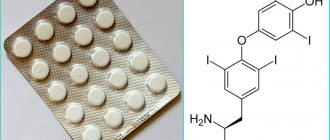Paracetamol is one of the most important active substances against pain and fever. This non-opioid (non-narcotic) analgesic is generally well tolerated, but it has various side effects and should not be taken lightly. Because interactions may occur with certain drugs, it is important to read the instructions for use. Pregnancy and lactation are not exclusion criteria for use. With appropriate dosage reduction, paracetamol can be prescribed at any age.
Paracetamol is one of the most popular painkillers worldwide and has been on the market since the 1950s. In 1977, the World Health Organization (WHO) included paracetamol in its list of “essential medicines.” The painkiller is available in pharmacies in various dosages. It can be obtained without a prescription, but should only be taken after consulting a doctor. For several years now, paracetamol has also been available as a combination drug together with other active ingredients, for example as a cold remedy.
Why is it not recommended to take pills in the morning?
The drug is available in several dosage forms. For example, in tablets for oral use. To know whether paracetamol is harmful or not, it is important to know how this medicine affects the body.
The anti-inflammatory, antipyretic and analgesic properties of the drug are ensured by the action of the active substance on the thermoregulation center of the brain. Many anti-inflammatory drugs have a pronounced negative effect on the mucous membrane of the stomach and intestines.
Harm from the drug
When taking medication, it is important to know why Paracetamol is harmful to health. Since its metabolism occurs in the gastrointestinal tract, liver and kidneys, these organs are most susceptible to the negative consequences of improper treatment. Paracetamol is also harmful if a person is allergic to the drug or has chronic liver and kidney diseases.
Article verified by Anna Moschovis - family doctor.
Found a mistake? Select it and press Ctrl + Enter
Source https://pillsman.org/23011-polza-i-vred-paratsetamola.html
- Paracetamol. Harm or benefit?
- How to survive the New Year holidays without harm to your health
Theraflu/Coldrex: harm or benefit
Scientists around the world have been studying the harmful effects of paracetamol on the human body for quite a long time. Currently, hundreds of cases of overdose of this drug have been identified. In some cases, people taking excessive amounts of Paracetamol have experienced serious complications such as deterioration in liver and brain function. Fatal cases have also been recorded.
The main danger of this medicine for the human body is a serious “blow” to the liver. With a constant increase in dosage or with prolonged use of this drug, acute liver failure may develop, which leads to a malfunction of the body as a whole.
The main symptoms of paracetamol overdose are:
- nausea and vomiting, accompanied by severe abdominal pain;
- dizziness and increased headache;
- In some cases, fainting occurs.
Also, using this drug too often or in large quantities may cause serious allergic reactions. Paracetamol should be taken only as prescribed by a doctor, and strictly following the instructions for use.
People taking this product should keep the following information in mind:
· You can take no more than 8 paracetamol tablets per day, that is, 1-2 tablets every four hours.
· When using Paracetamol in excess of the norm at one time, the next dose of the drug should be skipped.
· Paracetamol as an active ingredient is found in many medicines.
It is necessary to read the composition of the drugs to prevent the use of Paracetamol in quantities greater than the daily norm.
Drinking alcohol during treatment with Paracetamol is unacceptable. This medicine should also not be used as a hangover remedy.
It is important to remember that if the drug does not help with the pain, there is no need to increase the dosage. The safest thing for human health and life is to contact a specialist and choose a different medicine.
Source https://www.kakprosto.ru/kak-925105-paracetamol-vred-ili-polza
What? Where? When? How?
When is paracetamol taken?
Tablets are prescribed to people with the following symptoms:
- Arthralgia (recurrent occurrence of pain in the joints, in the absence of characteristic signs and symptoms of joint damage).
- Allodysmenorrhea (pain during menstruation as a result of infantilism, abnormal position of the uterus, inflammatory processes in the genital organs, endometriosis and other diseases, as well as increased excitability of the central nervous system).
- ARVI (a group of clinically and morphologically similar acute inflammatory diseases of the respiratory system caused by pneumotropic viruses. ARVI is the most common group of diseases in the world, combining respiratory syncytial infection, rhinovirus and adenovirus infections and other colds.
- Migraine (the main form of headache, the symptoms of which are periodic attacks of moderate to severe headaches).
- Neuralgia (a pathological condition that progresses due to damage to certain areas of the peripheral nerves).
- Fever in viral and infectious diseases. Cold fever and flu.
Poisoning and its symptoms
A list of signs of poisoning with such a medicine that occurs after ten to twenty-four hours may be as follows:
- lack of appetite, there is a complete aversion to food;
- severe nausea, frequent vomiting;
- severe painful spasms localized in the right hypochondrium;
- apathy, fatigue, weakness, malaise, increased drowsiness.
After thirty-six hours, the following disappointing and dire signs/symptoms begin to develop, namely:
- severe kidney failure is observed;
- pain and spasms are localized in the abdomen;
- a sharp drop in blood pressure;
- the patient's body temperature decreases significantly;
- the permissible level of glucose in the blood decreases;
- sweating increases;
- a person is tormented by severe thirst, dry mouth;
- Strong headache;
- delirium, development of hallucinations;
- the number of platelets in the blood decreases, resulting in thrombocytopenia;
- a coma occurs;
- jaundice and renal failure.
If the above symptoms of poisoning are detected, urgent, emergency medical care is necessary, otherwise everything will end in death.
How to take medications
The single and daily dose of paracetamol is determined by the doctor depending on age, weight, severity of pain or fever. Adults and children 12 years of age are prescribed 0.5-1 g; one to two hours after meals, the maximum concentration of the drug is up to 4 g per day.
The interval between taking the drug should be at least four hours. In people with impaired liver or kidney function, as well as with Gilbert's syndrome and in the elderly, the daily dose should be reduced and the interval between doses should be increased.
Drug treatment
It is very important to call a doctor in a timely manner, and also try to provide first aid. The main treatment for poisoning consists of the following important steps:
- it is necessary to rinse the victim’s stomach;
- give the patient activated charcoal;
- introduce a special antidote - acetylcysteine;
- perform artificial ventilation;
- introduce methionine.
Symptomatic treatment will be as follows:
- Compliance with special diet No. 5. Fats and proteins should be excluded from the diet. The diet consists of jelly, compotes, infusions, fermented milk products, light food;
- Administration of glucose intravenously;
- If heart failure is present, cardiac gliclazide will be required;
- In serious cases, surgery may be necessary - kidney removal, liver transplant.
When starting treatment with any medication, you must carefully study the instructions for use and consult with your doctor! Do not self-medicate, as this is fraught not only with your health, but also with your life.
Is paracetamol harmful for children?
As written in the annotation, the medicine is forbidden to be taken only by children under three years of age. The dosage of the drug is calculated based on the age and body weight of the child. The daily concentration from three to six years (with a weight of 15 to 22 kilograms) is 1 gram.
Up to nine years (up to 30 kg) - 1.5 g. Up to twelve years (up to 40 kg) - 2 grams. Frequency of use: four times a day; the interval between each dose should be at least four hours. If unpleasant signs persist, you should consult a doctor.
Recommendations
The tablet can be taken regardless of meals with water. Do not increase the indicated dosage without permission. Paracetamol should not be used for more than five days as an analgesic and more than three days as an antipyretic without the permission of a medical specialist. Increasing the daily concentration of the drug or increasing the duration of therapy is possible only under the supervision of a doctor.
Commentary by pediatrician Elena Andreevna Kovalenko
Acetaminophen (this is the international name) is recommended for children with a temperature above 37.5, as it is the most effective, safe and non-harmful drug available. Most other antipyretics have more pronounced side effects, and others are prohibited for use in pediatric practice. Therefore, if a child develops a high temperature, you can safely give him syrup with paracetamol.
The only case when you should refuse to use it is if the child has liver or kidney pathology, as well as when taking antibiotics. In such cases, it is recommended to reduce the high temperature without taking drugs with paracetamol, as it can provoke disturbances in the functioning of the excretory organs and gastrointestinal tract.
Reviews
Most of the reviews about the drug are positive. Paracetamol has a good effect on these diseases.
In general, patients respond wonderfully to the medication. The drug quickly eliminates fever, eliminates unwanted reactions and is well tolerated by people of all ages. Doctors believe that it is important during therapy to choose the right dosage form and calculate the dosage.
Paracetamol is one of the most widely used antipyretic drugs, and like any drug, it can harm the body. There is practically no harm to Paracetamol when used correctly, but if the permissible dosage is exceeded or a person has contraindications, taking the medicine can cause serious damage to your health.
Therefore, you should take Paracetamol only for medical reasons , having first read the instructions. The benefit or harm of a drug will depend on the validity and correctness of its administration.
A little about the drug itself
The benefits of Paracetamol are undeniable. Its active ingredient is acetaminophen. It is not poison or a drug. It is present in many medications that are used to relieve pain and fever. Acetaminophen is also used in pediatrics.
The global popularity of Paracetamol is breaking records. If a child’s temperature rises, most parents remember this particular drug. It is also often used to treat adults. It is not surprising that poisoning often occurs. It is important to understand that Paracetamol, along with its effectiveness, carries potential dangers. There are no safe drugs.
Paracetamol can actually be harmful if you exceed the recommended dose or take it too often. Poisoning with this drug is not uncommon. It is important to know the symptoms of such poisoning and be able to provide first aid.
Background
The dangers of paracetamol were first discussed in the West in 1977. It was used in the USSR, but it was not popular and no particular incidents happened to it.
In addition, the recommended dose of paracetamol was then several times lower than the current one: the maximum single dose was 0.5 grams instead of today’s 1 gram, and the daily dose was 1.5 grams instead of 4. By the way, dosages increased in the 1990s, when with its According to the charter, Western pharmaceutical companies rushed into our post-socialist monastery, and then drugs with massive doses of paracetamol appeared.
But even overseas, such drugs have repeatedly come under severe pressure: “The toxicity of paracetamol to the liver is comparable to that of some other drugs that have already been removed from the market,” said Peter Honig, head of the drug safety department of the Food and Drug Administration, in the early 2000s. US medicines.
As an example, he cited the drug Rezulin, used in the treatment of diabetes. But Rezulin is no longer there, and paracetamol is still on the horse.
True, recently in the USA they officially reduced the daily dose of paracetamol by a whole gram: before that it was 4 grams per day, and now - 3 (in our country everything remains the same).
Paracetamol may cause liver damage. Do not use this medicine with any other medicine containing paracetamol."
First aid for overdose
There are several ways to prevent overdose. These include:
- Gastric lavage. To do this, you need to drink 1-1.5 liters of water, it should be warm. You can replace the water with a slightly pink solution of potassium permanganate. After this, the urge to vomit is provoked (you need to press on the root of the tongue).
- Drink magnesium sulfate (saline laxative).
- Use any enterosorbent (Polyphepan, Enterosgel, Polysorb). You need to take it according to the instructions on the package. You can also use activated carbon (1 tablet per 10 kg of weight).
Recommended video:
Thus, you should not neglect the drug, since it is a rather serious medicine, despite its popularity. It can help in the right amount, but in other cases it harms.
Is prevention possible?
Paracetamol poisoning can be avoided if you follow simple rules:
- Follow your doctor's instructions and recommendations.
- Other drugs may contain the same active substance. Read the ingredients carefully. Do not take similar medications at the same time. Be especially careful with mixtures for treating flu and colds! Most of them contain Paracetamol.
- Non-steroidal anti-inflammatory drugs should not be taken at the same time as Paracetamol. They will enhance the effect of this drug.
- You should not drink alcohol during treatment.
- You need to hide medications from children.
Features of therapy
People who have a history of severe liver damage should consult a specialist and undergo blood tests to determine the activity of liver transminases before treatment.
If it is necessary for a person to use the medication for a long time, it is important to monitor blood counts. In pediatrics, the drug is prescribed in the form of a suspension, which can be given to children from two months.
Is Paracetamol harmful to the liver? If we talk about the effect of the drug on this organ, it should be noted that this particular drug acts as a direct hepatotoxin. This means that the more Paracetamol a patient consumes, the higher the likelihood of developing hepatitis and liver failure.
Diagnostics
If an overdose is suspected, it is necessary to examine the level of paracetamol in the blood. To determine the need to use an antidote, the Rumak-Matthew nomogram is used, which allows one to predict the severity of liver tissue damage.
The study is done 4 hours after the medicine enters the body. To do this, you need to know the exact time of poisoning. If there are no clinical manifestations and the concentration is less than 150 mcg/ml, then there is no danger. At higher levels of toxic substances, the risk of liver damage is very high and immediate administration of an antidote is required.
If the paracetamol content is dangerous, then the level of liver enzymes, bilirubin, glucose, and blood clotting ability is monitored daily.
When a patient seeks medical help, he is immediately examined. But first, the doctor asks what dosage was taken and when the incident occurred (patients do not always go to the doctor in the first hours or even days).
Next, a liver test is taken, namely ALT (alanine aminotransferase) and AST (aspartate aminotransferase). In moderate and severe conditions, the levels will be above 1000 units/l.
Along with this, toxicity assessment is carried out (Rumak-Matthew nomogram). The study helps the doctor decide whether the patient needs to be given an antidote. Toxicity assessment is carried out four hours after the drug enters the body (for this, the doctor needs to know the exact time of taking paracetamol). If there are no general symptoms and the drug content in the blood is below 150 mcg/ml, then at the moment the patient’s health is not in danger.
If the concentration has reached a critical level, then a number of measures are taken (more on this below). After this, the levels of liver enzymes, bilirubin, and blood clotting are monitored for a week.
Severe allergic reactions
Numerous scientific studies have linked paracetamol use to severe allergic skin reactions.
We are not talking about a “rash on the cheeks” at all, but about such terrible things as toxic epidermal necrolysis and Stevens-Johnson syndrome - very rare but deadly skin reactions.
According to FDA Adverse Event Reporting System (FAERS) records, there were 107 such cases reported in the United States between 1969 and 2012, resulting in 67 hospitalizations and 12 deaths.
“The actions of the FDA and other regulatory agencies around the world must be reconsidered based on the potential consequences and undeniable benefits for the millions of people who take acetaminophen. Given the dangers of such skin reactions, healthcare providers and patients should be aware and aware of them, urges Sharon Hertz, director of the FDA's Office of Anesthesia and Analgesia Products.










